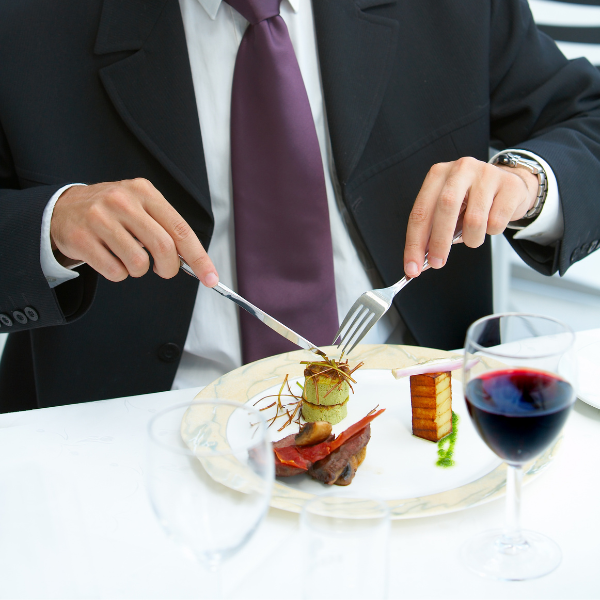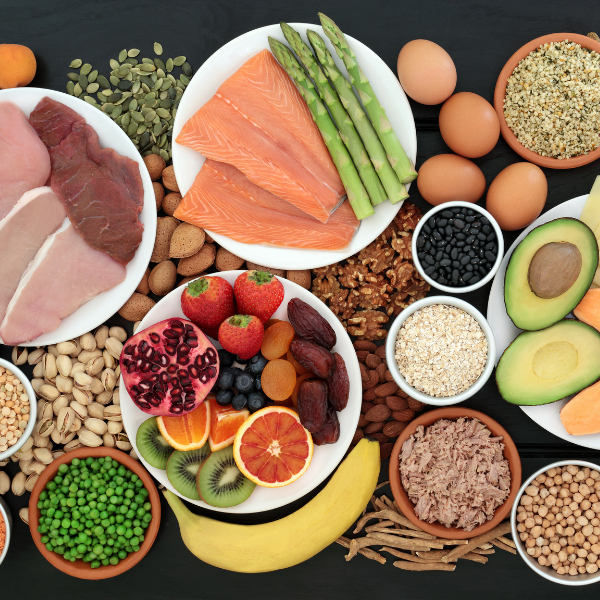When it comes to dining experiences, the freshness and quality of seafood cannot be overstated. As the demand for takeout and delivery continues to rise, restaurants and food services offering seafood face unique challenges to ensure that their products reach customers in the best possible condition. Integrating specific best practices from the point of order to delivery ensures that the seafood remains delicious, safe, and visually appealing. Here's an in-depth look at the best practices for seafood take out and delivery.
Understanding Seafood Safety
Temperature Control
Cold Chain Management: To prevent bacterial growth, seafood must be kept at safe temperatures throughout the supply chain. Ensuring a consistent cold chain from the supplier to the consumer is crucial, especially during transit and when food awaits pickup or delivery. This means utilizing refrigerated storage units and transportation facilities with accurate temperature controls to monitor and maintain the recommended temperature thresholds. The FDA recommends keeping cold seafood at or below 40°F.
Cross-Contamination Prevention
Separate Storage: Use separate containers for raw and cooked seafood to avoid cross-contamination. This practice helps prevent bacteria from raw seafood from transferring to cooked dishes, ensuring the safety and hygiene of all seafood products. It's also advisable to clearly label these containers and store them in designated areas within the refrigerator or cooler to minimize the risk of accidental mixing or contamination.
Utensils And Surfaces: Regularly sanitize surfaces and utensils that come into contact with seafood. This step is pivotal in maintaining a hygienic preparation environment and preventing the spread of foodborne pathogens. Sanitizing should be done with an effective cleaning solution that is safe for food-contact surfaces. It's crucial to ensure that this process is conducted after each use of utensils and surfaces, especially when switching between handling different types of seafood or moving from raw to cooked food preparation activities.

Packaging Seafood For Takeout And Delivery
Choosing the appropriate delivery and take out supplies not only helps preserve the temperature and freshness of seafood but also plays a significant role in preventing spillage and protecting the texture and integrity of the dish. Advanced packaging solutions like vacuum-sealed bags, sturdy containers with tight-fitting lids, and insulated boxes with ice packs can all contribute to delivering a high-quality seafood experience to the customer’s door.
Materials
Insulated Containers: Utilizing insulated containers is crucial for regulating the temperature of seafood during transit. These containers are designed to keep cold foods cold and hot foods hot, significantly reducing the risk of bacterial growth that can occur when perishable items like seafood are not kept at safe temperatures. Insulated packaging solutions vary from insulated foam boxes to thermal bags, all aimed at providing a temperature-controlled environment.
Leakproof Packaging: Leakproof packaging is essential in generating confidence in the delivery of seafood dishes, guaranteeing that the dining experience at home mirrors the quality expected from a restaurant. By employing materials and designs that specifically address the containment of liquids, businesses can safeguard against the potential mess and cross-contamination that may otherwise diminish the customer's satisfaction and the perception of the brand.
Presentation
Visual Appeal: Visual appeal is paramount, even for take out orders. Choosing packaging that maintains the structure and presentation of seafood dishes is crucial to ensure that they reach the customer as intended, without the elements becoming disheveled during transport. This commitment to presentation preserves the dining experience's integrity, echoing the care and quality of the restaurant’s culinary expertise, which can significantly influence customer satisfaction and encourage repeat business.
Sustainability
Eco-Friendly Options: Incorporating eco-friendly options into your packaging strategy not only aligns with the growing consumer preference for sustainability but also showcases your restaurant's commitment to environmental responsibility. Using recyclable or biodegradable packaging materials reduces waste and minimizes the ecological footprint of your operations. This approach not only appeals to eco-conscious customers but also sets a positive industry standard, enhancing your brand's reputation as a forward-thinking and responsible business.

Menu Optimization For Seafood Delivery
Not all seafood dishes are equally suited for takeout or delivery. Optimizing your menu can prevent common pitfalls. Selecting dishes that maintain their integrity, flavor, and presentation during transport can significantly enhance the customer's dining experience. Strategically choosing and adapting your seafood offerings will also mitigate risks such as spoilage or textural degradation, ensuring that your takeout or delivery service reflects the high quality of your restaurant's dine-in experience.
Select Dishes Wisely
Fry With Caution: Fried seafood can become soggy. If offering fried options, ensure they're well-drained and packaged in a way that minimizes steam accumulation. This prevents a build-up of moisture within the packaging, which is crucial for maintaining the crispness and appeal of fried foods during delivery or takeout.
Highlight Durable Dishes: Stews, curries, and grilled seafood tend to travel better. Their inherent characteristics ensure that they can withstand the journey from kitchen to customer without losing flavor, texture, or temperature, making them ideal choices for your delivery and takeout menu.
Modify Recipes For Travel
Adjust Sauce Quantities: To prevent seafood from becoming soggy, consider reducing sauce quantities or packaging sauces separately in sauce containers. This approach not only maintains the desired texture of the seafood but also gives customers the freedom to add the sauce according to their taste, enhancing their overall dining experience at home.
Texture Considerations: Adjust cooking times slightly for seafood that continues to cook from residual heat during delivery. This anticipatory step helps ensure that the seafood arrives at the ideal texture, preventing it from becoming overcooked or rubbery by accounting for the residual heat that can affect seafood significantly during the transport process.

Communication And Timing
Accurate Delivery Times
Realistic Estimates: Provide customers with accurate delivery times to avoid extended waits that can degrade food quality. Honesty in expected wait times builds trust and customer satisfaction, as it helps ensure that seafood dishes are enjoyed at their optimal freshness and flavor upon arrival.
Rapid Dispatch: Aim to have deliveries dispatched as soon as possible after preparation. Train delivery drivers the importance of maintaining food integrity and quality during transport. This practice minimizes the time seafood spends in transit, greatly enhancing the likelihood of maintaining its ideal temperature, texture, and quality, providing a dining experience that closely mirrors the freshness of in-restaurant service.
Customer Communication
Preparation Tips: Include instructions for reheating or assembling dishes if necessary, preserving the intended dining experience. Detailed guidelines can empower customers to easily finalize their meals at home, ensuring that the flavors and textures are as the chef intended and enhancing overall satisfaction with the meal.
Feedback Solicitation: Encourage customers to provide feedback on their delivery experience to identify areas for improvement. Actively seeking and evaluating customer input can reveal vital insights into the effectiveness of delivery logistics and culinary execution, facilitating continuous improvement and a deeper understanding of customer needs and preferences.
Training Staff For Excellence
The success of takeout and delivery services depends significantly on your staff's understanding and implementation of best practices. Proper training and clear communication of procedures ensure that every team member contributes to providing a high-quality and consistent food delivery experience, fostering customer loyalty and operational efficiency.
Handling and Packaging
Detailed Procedures: Establish clear procedures for handling, packaging, and inspecting seafood before delivery. By documenting and adhering to these practices, you can safeguard the quality and safety of seafood products and ensure that they reach customers in the best possible condition. This contributes to maintaining your service's reputation for excellence and reliability.
Regular Training: Conduct regular training sessions to reinforce the importance of food safety and quality control. Such training should be comprehensive and continuous to ensure that all staff members are up-to-date with the latest standards and practices. This helps prevent foodborne illnesses and maintains high standards for customer satisfaction, contributing to the trust and credibility of your business.
Customer Service
Issue Resolution: Train staff to address and resolve any issues with takeout or delivery orders promptly and professionally. Equip your team with the skills and authority necessary to handle complaints or problems effectively, ensuring customer satisfaction is maintained. This proactive approach not only helps retain the customer but also enhances the reputation of your service as responsive and customer-focused.
Maintaining High Standards In Seafood Takeout And Delivery
By adhering to these best practices for seafood takeout and delivery, businesses can not only ensure the safety and satisfaction of their customers but also enhance their reputation and encourage repeat business. Maintaining the highest standards for seafood quality and handling can prove to be a significant differentiator in the competitive food service industry.
















